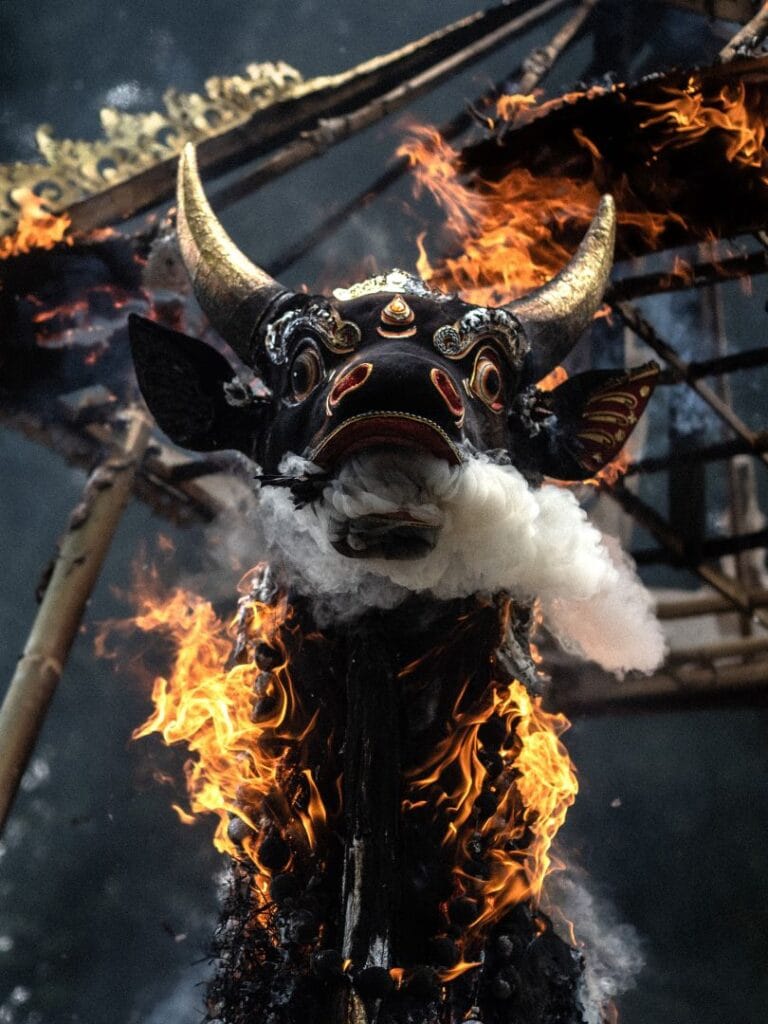One of the most awe-inspiring sights in Bali? A crowd of people sprinting through the streets with a massive, elaborately decorated bull. It’s not a parade—it’s a Balinese cremation ceremony, and it’s as intense as it is beautiful. To break down the meaning behind this fiery tradition, we turned to our Bali culture gurus—Ubud Story Walks—to walk us through the ritual and decode the jaw-dropping scenes you’re bound to witness.
Why burn the dead?
In Bali, fire is freedom, and cremation is a transformation. To be reborn, the body must burn, its smoke spiraling skyward, clearing the way for the soul’s return. The Balinese believe in ancestral paternal reincarnation: a great-grandfather reborn as a great-grandchild, cycling through the same bloodline. But these days even a modest ceremony can cost thousands of dollars, placing a heavy burden on families. Those who can’t afford immediate cremation begin with a simple cleansing and burial, holding space for the soul until funds — and the stars — align. When they do, the community holds a ngaben massal —a shared Balinese cremation ceremony that takes place every few years. Families combine their resources, and their dead make the journey together, so no spirit is left wondering.
How a Balinese Cremation Ceremony Begins: Ritual at Home
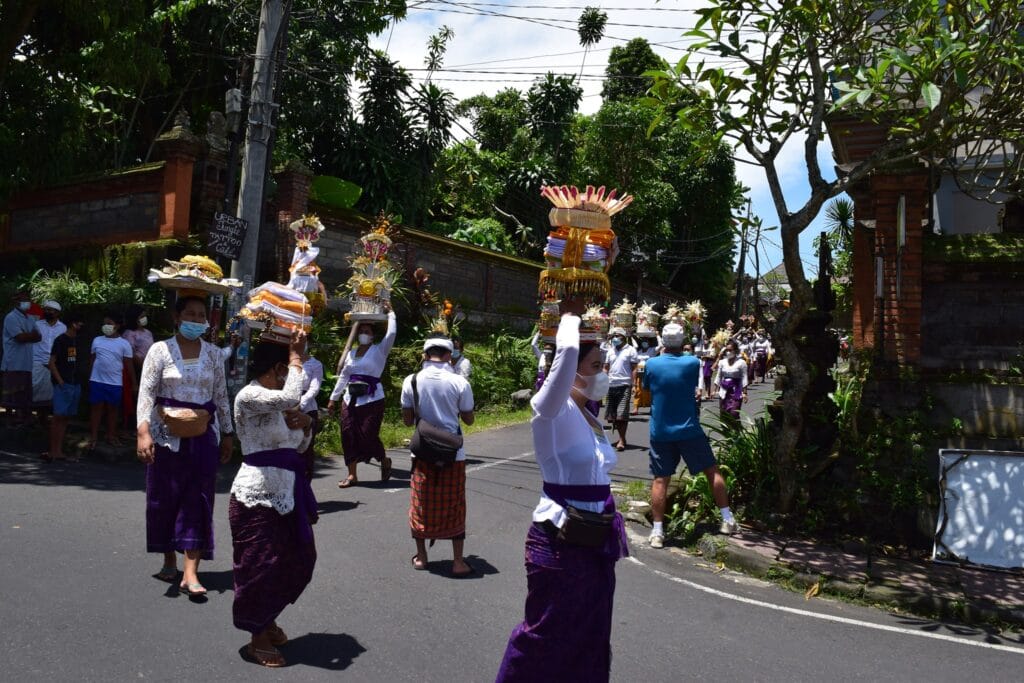
It begins at home. The air hums with preparation. Contrary to what you might expect, there are no tears—this is a celebration, not a mourning. The family prepares elaborate offerings, towers of food, cakes drenched in color — all crafted to guide the soul. Outside, the banjar, the deceased’s neighborhood, gathers as one. The body, robed in white, is placed into a soaring bade (cremation tower). Alongside it, a sarcophagus—petulangan—waits to carry the remains into flame.
Symbols in a Balinese Cremation Ceremony: Choosing the Sarcophagus
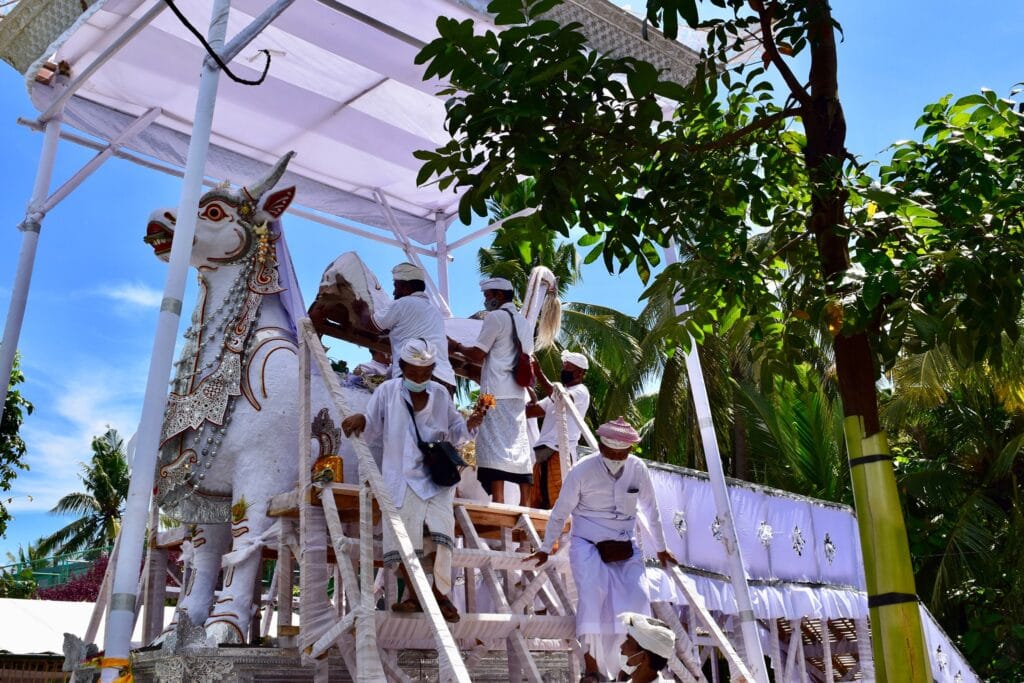
Every sarcophagus is a statement. Crafted by the men of the banjar, it’s chosen with care. A high nobles might ride a winged lion. A high priest, a stately black or white bull. Lower castes traditionally use gadja mina, a fantastic creature with an elephant’s head and a fish’s tail. If a family once served a king or a noble, they may elevate their dead with the form of a bull, regardless of caste. Although today, the choice is more flexible and personal.
Funeral Procession
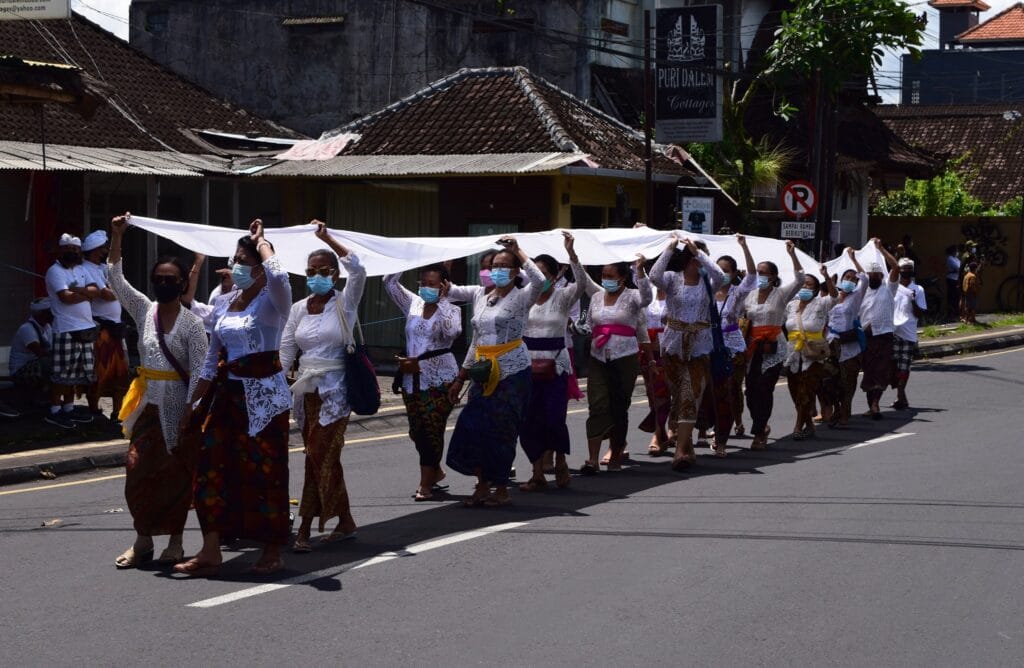
Then the streets erupt. With whoops and cheers, the sarcophagus is hoisted onto bamboo poles, sometimes with a young boy clinging to the top — a symbol of youthful energy and lineage. Behind them, women dressed in vibrant finery carry offerings balanced high on their heads. A ribbon of white cloth—the lancingan—streams out from the tower, held aloft by a river of hands. It’s a way for everyone to take part in guiding the soul forward.
Suddenly, they’re running. Spinning. Shouting. The sarcophagus twirls violently at every crossroads—three times counter-clockwise—to confuse the spirit (or the evil ones that follow it), ensuring it won’t return home. This chaos is ritual, this orchestrated mayhem – a protection.
Arrival to cremation grounds
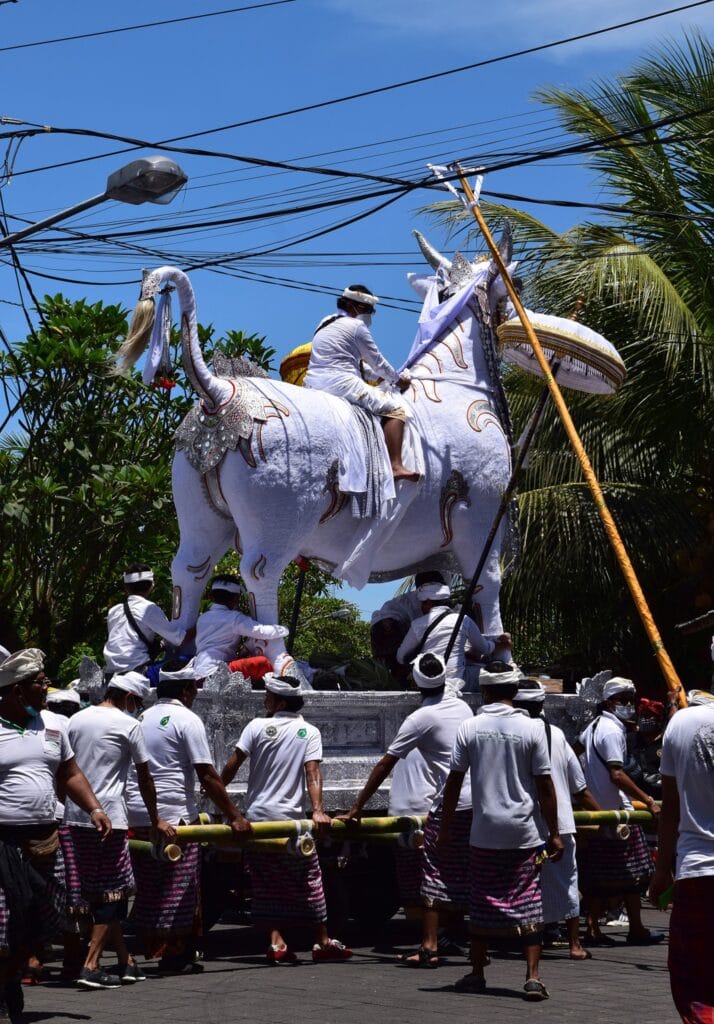
The procession ends near the Pura Dalem. The sarcophagus is brought beneath a tented pavilion. There, it’s opened. The body is carried with reverence from the towering bade and placed gently into the hollow creature’s back. After the final offerings are complete, priests and elders step forward, pouring holy water into the chamber, sanctifying everything it touches.
Igniting The Pyres
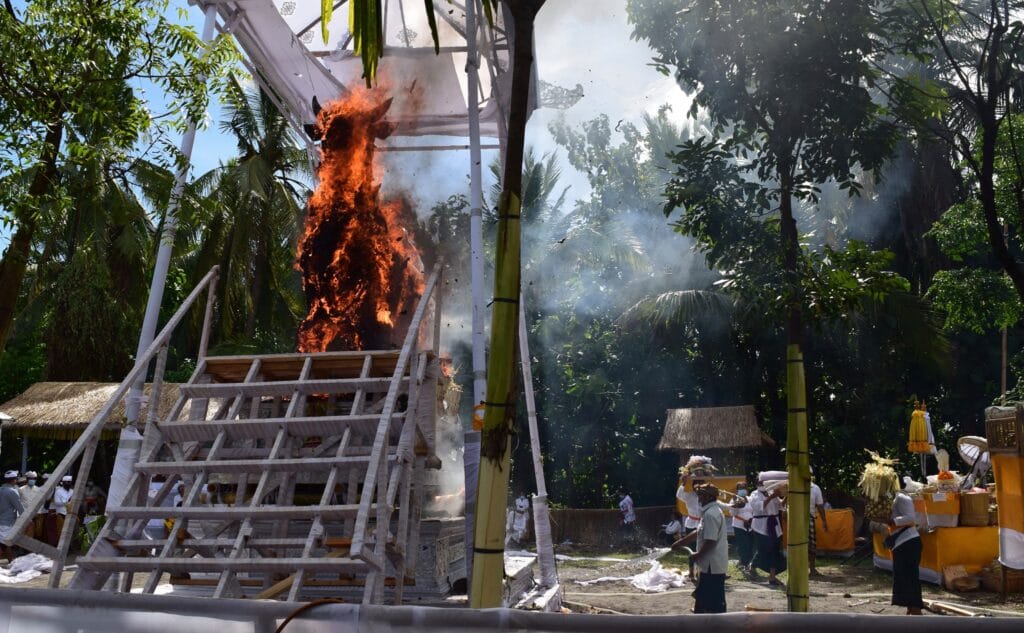
Finally, it’s time for the fire – Balinese cremation ceremony comes to an end. The sarcophagus, sealed once more, is lit. Crackling wood. Perfumed smoke. The air thick with incense, prayers, and the murmur of last goodbyes as the flames liberate the soul. Untethered, purified, it begins its ascent.
And when the last ember dims, the family gathers what remains. Ashes are lovingly collected and taken to the sea or a sacred river. There, they’re released into water, and with that— a full circle is complete. A life ends, a spirit moves on, carried by wind, water, and memory.
If you’d like to learn more about Bali traditions and culture, check out Ubud Story Walks amazing tours, and if the topic of death makes you curious, read this article by Bali’s Death Doula Catherine Shovelin.

